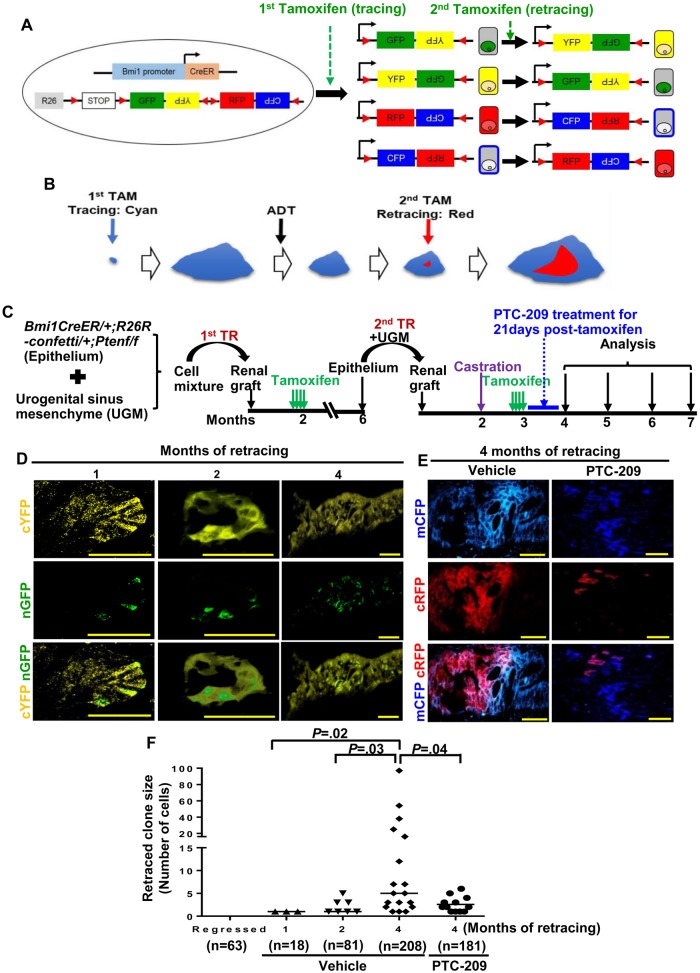Figure 7.
The role of tumor castration-resistant Bmi1+ cells (CARBs) in initiating recurrence after castration using lineage retracing. A and B) Scheme for tracing and retracing. Tamoxifen-activated CreER is expressed from the Bmi1 locus without disrupting the endogenous Bmi1 gene in Bmi1CreER mice. With the R26R-Confetti knock-in allele, induction of Cre recombinase randomly labels Bmi1+ cells with red, cyan, green, or yellow fluorescent protein. A second tamoxifen pulse will result in infrequent random “flipping” of the remaining reporter cassette and switching the color (as shown in B: cyan→red) of a Bmi1+ cell within a clone which can expand (retracing). C) Experimental design for lineage retracing of Bmi1+ tumor cells. D-F) Representative images (D and E) and quantification (F) of retraced cells before and at the different times after second tamoxifen induction in p-Akt+ lesions of PTC-209 (n = 12)- or vehicle (n = 12)-treated grafts. Clone size of retraced cells within parental clones increased progressively over time in vehicle treated mice while PTC-209 administration suppressed the expansion of retraced clones. n = the number of clones analyzed (clone size shown as number of cells per clone). Two-sided Student t test. Scale bar, 50 μm.

